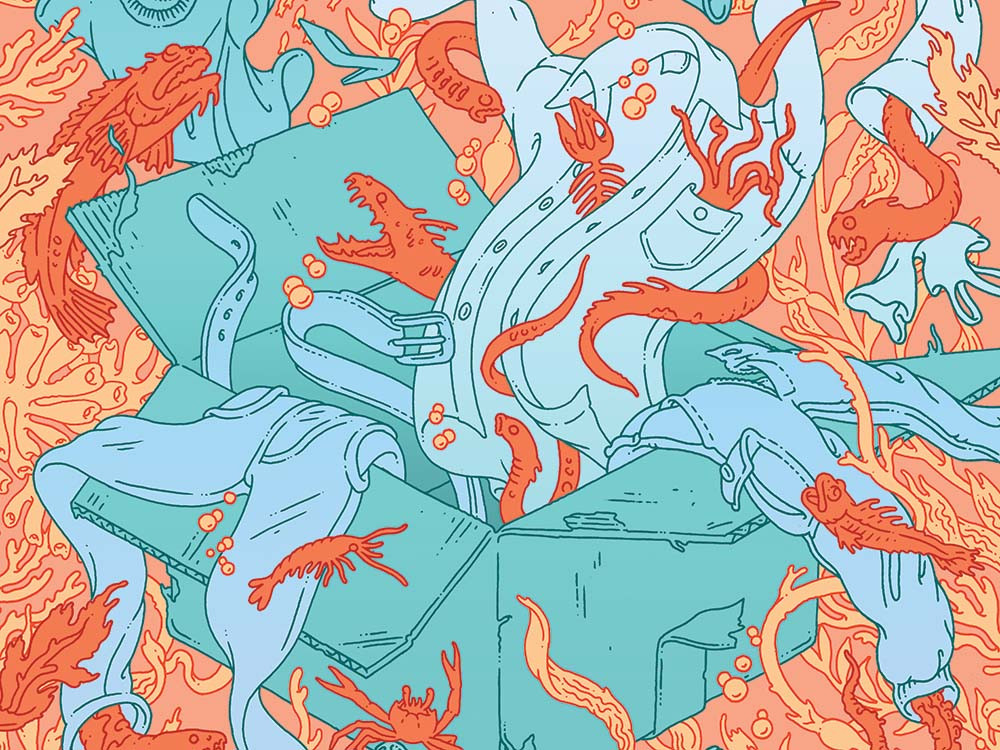
Thanks to the respondents for adding context and nuance to my assessment of circular fashion. They offer many important insights, including Ron Gonen’s observation that “the mindset of valuing quality and longevity” is absent from the industry, Roland Geyer’s reminder of the tradeoffs between materials and labor, and Maxine Bédat’s detailing of the pernicious consequences of NGOs being subject to industry-led regulatory capture that undermine the implementation of circular practices.
I want to specifically credit Dominique Drakeford for highlighting the punctilious nitpicking aimed at supply-chain transparency, incomplete reporting, and feckless certification schema. I would also add companies’ inflated and unaccountable target setting to this list. Drakeford is correct that excessive attention to these “low-hanging,” “secondary climate contributors” postpones fashion’s long-overdue systemic reckoning.
I also appreciate Geyer’s reminder that circularity is just the latest in a long line of naive “win-win” solutions that ultimately prove ineffective. A corollary of the simultaneous ascendence of neoliberalism and escalating environmental challenges, win-wins made for powerful case studies but ultimately lacked empirical validation. In the early 1980s, physicist Amory Lovins first proffered the “negawatt revolution” to “solve climate change for fun and profit.” An endless stream of proposed yet unproven win-win solutions followed suit, including “it pays to be green,” “the fortune at the bottom of the pyramid,” “creating shared value,” and “reverse innovation.”
Now, circularity has emerged as the latest corporate win-win strategy to address social and environmental ills and deter profit-reducing regulatory action. And, with an industry that is all about the latest trend, it was but a matter of time before fashion brands capitalized upon it to appeal to environmentally conscientious consumers. Last year, Chinese fast-fashion brand Shein launched a resale platform to “ignite a cultural movement of circularity within our own Shein community,” according to its global head of ESG, Adam Whinston. Crocs devoted a considerable portion of its 2022 sustainability report to circularity, despite not having a closed-loop system in place for any of its more than 140 million pairs of shoes sold annually. And, in academia, Harvard Business School hosted a conference selling attendees on circularity as a “trillion-dollar opportunity” for industry.
Unfortunately, none of these circularity efforts address the root cause: the hyper-consumption that results in discarded synthetic shoes and shirts filling landfills and the microplastics polluting the oceans and even finding their way into our own bodies. A 2023 study examining circular practices in 28 European economies showed that consumption growth increases resource extraction four times more than the resource savings achieved by circular initiatives. So, even if we were to develop the requisite technology and infrastructure to realize the industry’s circularity goals, it would do little to decouple consumption from resource use.
If reporting, certification, transparency, and win-win solutions will not lead to a sustainable future, where do solutions lie? A good place to start is with a candid acknowledgment of the causes of the challenge: excess consumption and externalities. Swedish outdoor brand Houdini illustrates how industry can advance solutions by revising its values. As Houdini CEO Eva Karlsson observes, “The fact is that profits are often made by compromising people in the value chain, and the considerations of ecosystems are equally poor.” The brand has developed a slow flow for new product introductions and a design process oriented toward durability and reuse to extend product life cycles.
But Houdini remains an outlier, and few brands have dared to emulate an approach that compromises growth or profit. Thus, as my respondents suggested, new system rules and incentives must be put in place to ameliorate the fashion industry’s accelerating negative social and environmental impacts. In keeping with Drakeford’s admonition, such systemic change must address colonization and its consequences. And, to heed Nancy Bocken, a plan forward “should prioritize sufficiency over recycling.”
At long last, several promising legislative proposals address these core issues. For example, New York’s Fashion Act, as Bédat and I discussed in our respective articles, mandates carbon reductions and levies penalties for noncompliance. And a recent proposal by the Or Foundation addresses colonization, the use of disposable materials, and excess production and consumption. The proposal builds on a 2009 French law mandating extended producer responsibility in the textile industry. It calls for the following:
- Price increases for brands to account for the full cost of end-of-life for each garment, with a portion of these funds then disbursed to countries in the Global South, where most fashion is resold or ends up incinerated or in landfills
- Varying bonuses and penalties based on garment type, known as “eco-modulation” (e.g., cheap nonbiodegradable synthetics to be charged more than durable, single-blend garments made from natural materials)
- Reduction targets for new clothing production to make room for growth of secondhand fashion
Decades of faith in voluntary corporate action have resulted in disparate and insufficient progress. Well-designed legislative mandates are needed to compel the fashion industry to improve its social and environmental outcomes and to ensure that the circle we call Earth remains habitable for future generations.
Support SSIR’s coverage of cross-sector solutions to global challenges.
Help us further the reach of innovative ideas. Donate today.
Read more stories by Ken Pucker.

